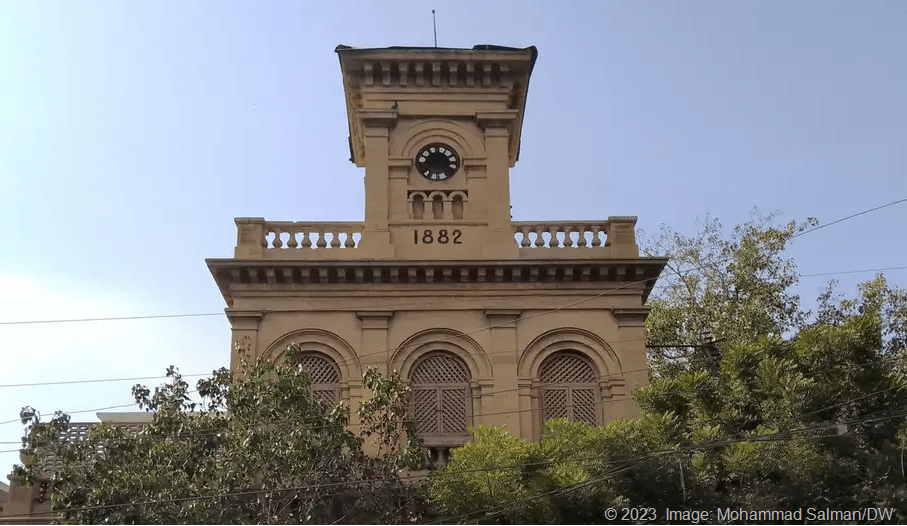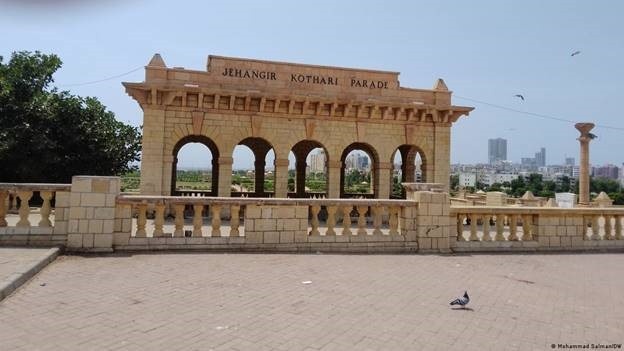Karachi was once home to thousands of Parsis, followers of Zoroaster (Zarathustra), the spiritual founder of Zoroastrianism. Some of them still live in the city, but the future for their community seems grim.
Article by Mohammad Salman | DW
The history of Zoroastrians on the Indian subcontinent spans for well over a millennium
Image: Mohammad Salman/DW
In the West, the name of the ancient Persian prophet “Zarathustra” invokes the writings of Friedrich Nietzsche, the iconic music composed by Richard Strauss, and Stanley Kubrick’s cinematic masterpiece 2001: A Space Odyssey, which uses Strauss’ music for the movie’s opening and its finale.
But to the Parsi community in Karachi, the figure of Zarathustra or Zoroaster carries a much deeper meaning — they know him as the founder of Zoroastrianism, one of the world’s oldest organized religions, whose teachings they follow to this day. One of the religion main tenants is to spread happiness through charity and good deeds. And, in times before the 1947 partition of India, Karachi’s Parsi community made its presence known by helping the cultural and infrastructural development of the city.
Thanks to their efforts, Karachi gained new schools, hospitals, and theater halls.
“The interesting thing was that they lived in the areas that they built for themselves — such as the Parsi Colony in Karachi — but all their philanthropic deeds would be for the other areas,” town planner and architect Arif Hasan told DW.
“For example, they built schools such as Mama Parsi and BVS, dispensaries and maternity hospitals for the city.”
Parsi mayor that created modern Karachi
The history of Zoroastrians on the Indian subcontinent spans for well over a millennium. Their religion was once dominant in ancient Persia (present-day Iran), but they were forced to flee their homes due to the Arab conquest in the 7th century and eventually found their way into the territories controlled by present-day India and Pakistan.
They became known as Parsi, due to their Persian roots.
In the early 20th century, Karachi boasted a vibrant Parsi community. In the 1930s, when Karachi got its first elected mayor, that mayor was a Parsi — Jamshed Nusserwanjee. He is remembered to this day for his massive contributions to the city’s infrastructure, his focus on cleanliness and education, and his contributions to the needy.
Jehangir Kothari Parade is a promenade built on land donated by Seth Jehangir Hormusji Kothari, a Parsi, to the city of Karachi in 1919Image: Mohammad Salman/DW
Other members of the group also rose high in the city, and the community continued to prosper after the official creation of Pakistan in 1948.
“The number of our community did not diminish [immediately] after partition,” prominent Pakistani Parsi and Executive Director at Avari Hotels Dinshaw B Avari told DW.
“In fact, it increased because no one — at least not to my family’s knowledge — went back to India after independence. They all stayed here. The community did well, it prospered and grew. I remember my father telling me, up until 1977, there were between 8,000 and 1,000 Parsis in the country, 80% of which lived in Karachi.”
Population decline
In the late 1970s, however, the region was hit by upheaval — the military coup that ousted Pakistan’s Prime Minister Zulfikar Ali Bhutto in 1977, the Islamic revolution in Iran and a coup in Afghanistan in 1978, with the Soviet invasion following in 1979 — prompting sweeping changes within Pakistan. New security challenges, waves of refugees coming out of Afghanistan, and Pakistan’s growing ties with the Afghan mujaheddin led to deterioration of democracy and the rule of law, especially in Karachi. It was in that time that they started to leave the metropolis.
Their numbers continued to drop in the coming decades, and the once-influential group now plays only a minor role in Pakistan’s most populous city.
“Currently, according to an estimate, there are around 800 Parsis in Pakistan, out of which 60% are over 65 years old. In seven years, we should be down to 400 people,” Avari told DW.
“There are two causes [for this]. One, it’s a dying community because of its age. In addition, all the young people and their families have migrated for economic reasons. They have gone to Australia and Canada… and before that they went to the UK,” he added.
Around 250 Parsis left during the COVID pandemic, according to Avari.
Marriage traditions also a threat to survival
Artist Jimmy Engineer, another known Parsi, doesn’t believe that economy is the main reason for Parsis leaving Pakistan. He says the emigration was spurred by “the change that has occurred in society’s mindset.”
“The kind of lifestyle that the community had, the clothes that they wear, for example, made life a little difficult for them here, so they started to leave. This happened to other minorities as well. Some went to the UK, some to Australia and Canada.”
Why is the Parsi community so automobile crazy?
Town planner Arif Hasan notes another reason for the shrinking Parsi community. He points out that they also marry within their own community “which is a big cause of population reduction.”
No room for growth
At any rate, Zoroastrians who left for the West seem to be more prosperous than those who stayed behind, according to Avari.
“Those who have left have actually done very well for themselves and their families in relation to what they had in Pakistan. They have financial independence,” he added.
Avari also believes that the challenges facing Parsis are similar to those faced by other minorities in the overwhelmingly Muslim city.
“There is economic discrimination,” he told DW. “A bank teller will remain a bank teller. He doesn’t grow, though he may want to. I know Parsi tellers at multinational banks who retired as tellers. That wouldn’t happen to a member of the majority.”


